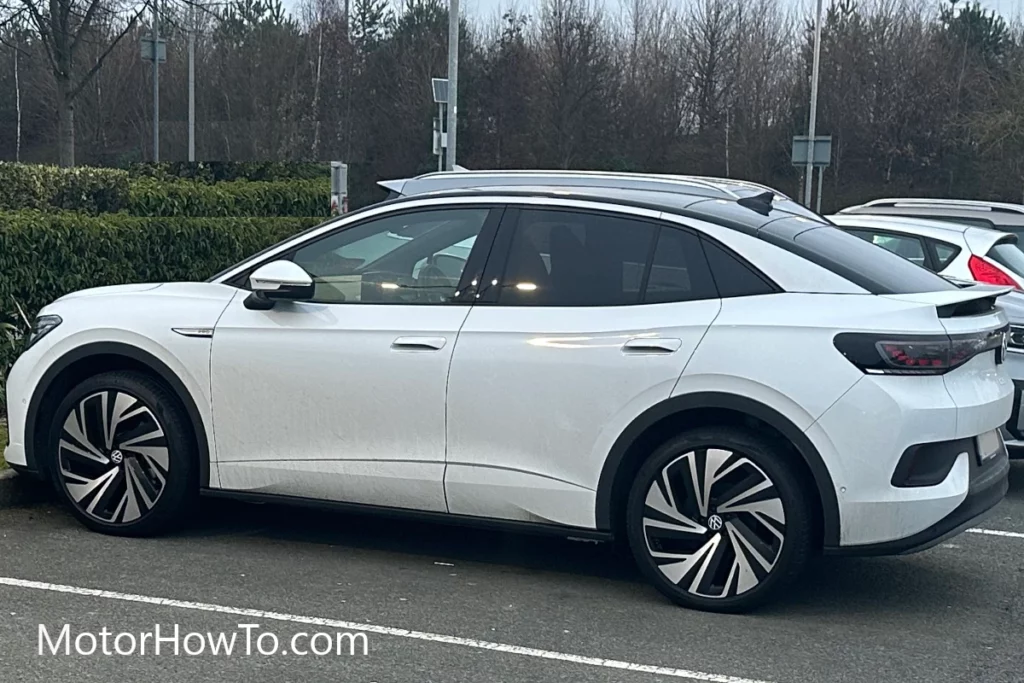While electric vehicles (EVs) offer many benefits, including lower operating costs and reduced emissions, there are also potential downsides to consider.
One of the biggest concerns for EV owners is what happens when their vehicle loses power, particularly if they are out on the road.
Understanding the causes of EV power loss and what to do in the event of a failure can help drivers feel confident and prepared.
When an electric vehicle (EV) loses power or runs out of charged miles, it can no longer move and must be recharged. You can recharge the vehicle by calling a portable remote charging service or by towing the vehicle to a charging station. If you are unable to charge the vehicle due to a different fault then a tow truck may be necessary to take the vehicle to a service center.

Losing power in an EV can happen for a variety of reasons, from a dead battery to a mechanical failure.
Regardless of the cause, it can be a stressful experience for drivers, especially if they are far from home or a charging station.
To prepare for the possibility of power loss, EV owners need to understand what can cause it and what steps they can take to minimize the risk.
This includes staying up to date on regular maintenance, being aware of the battery’s state of charge, and having a plan in place for what to do in the event of a power failure.
Related:
- Does An Electric Motor In Electric Cars Wear Out? (Explained)
- Is RWD Or AWD Better For Electric Cars? (Answered)
- Are Electric Cars Smoother To Drive? (Answered)
Do Electric Cars Stop Suddenly?
Electric cars are powered by an electric motor and a battery rather than a gasoline engine. This means that the acceleration and power delivery of an electric car can be different from a gasoline-powered vehicle.
Unlike a gasoline engine, which generates power gradually, an electric motor can provide instant torque, making the car feel more responsive and capable of sudden acceleration. However, in some cases, electric cars can stop suddenly due to a power failure or other issues.
This can happen when the battery runs out of charge or when there is a problem with the car’s electrical system. When this happens, the car will lose power and come to a stop. In some cases, the car may only be able to restart once the issue is resolved.
It’s important to know that electric cars, like any other type of vehicle, can experience issues that can result in sudden stops. This is why it’s important to stay up to date on regular maintenance, such as checking the battery’s state of charge and ensuring that the car’s electrical system is functioning properly.
Also, it’s a good idea to have a plan in place for what to do in case of a power failure or other issues. This can help drivers feel more confident and prepared in case of an unexpected stop.
Watch this great video demonstrating 4 different cars running out of miles.
Can Electric Car Be Pushed If It Runs Out Of Charge?
Yes, you can push an electric car if it runs out of charge.
Unlike a traditional gasoline-powered vehicle, which has a large and heavy engine, an electric car is relatively lightweight. This means that it is possible for two or more people to push an electric car a short distance if needed.
However, pushing an electric car can be more challenging than pushing a gasoline-powered vehicle.
Electric cars are often equipped with low-rolling-resistance tires, making it harder to push them on slippery surfaces.
Additionally, the car’s smooth and aerodynamic shape can create wind resistance that makes it more difficult to push.
Note that pushing an electric car should only be done as a last resort, as it can be physically demanding and potentially dangerous.
Pushing an electric car over long distances or on steep hills can be extremely difficult and is not recommended.
If your electric vehicle runs out of charge, it’s generally best to call for a tow truck or other assistance.
Can You Jump-Start An Electric Car?
No, you can’t jump-start an electric car in the traditional sense as it doesn’t have a traditional internal combustion engine that you can jump-start with a set of jumper cables.
Instead, if an electric car runs out of charge, it must be charged using an electric charging station or a portable charging device.
However, some newer electric cars have a feature known as “emergency charging,” which allows a small amount of power to be transferred to the car’s battery using a special charging cable.
This can provide enough power to drive the car to a nearby charging station or a location where you can fully charge it.
Emergency charging should only be used in an emergency, as it will only provide limited power.
Can You Leave EV Plugged In All The Time?
Leaving an electric vehicle (EV) plugged in all the time is not recommended, as it can potentially damage the car’s battery and reduce its overall lifespan.
Most modern EVs are equipped with a feature called a “smart charger,” which stops charging the battery once it reaches a full charge and prevents overcharging.
However, even with a smart charger, it’s generally best to unplug the car once it’s fully charged to prevent the battery from being overstressed.
EVs plugged in all the time can increase your electricity costs, as the car will continue to draw a small amount of power from the charging station, even when it’s not actively charging.
This can add up over time and result in higher electricity bills. To avoid this, it’s best to unplug the car once it’s fully charged and only plug it in when needed.
This can extend the lifespan of the car’s battery and reduce electricity costs.
Range And Range Anxiety in Electric Vehicles
Range anxiety refers to the fear of running out of power while driving an electric car and being unable to reach a charging station in time.
This is a common concern among drivers who are considering switching to an EV, as the range of most electric cars is still limited compared to gasoline-powered vehicles.
The range of an electric car is defined as the maximum distance it can travel on a single charge, and it can vary greatly depending on factors such as battery capacity, driving habits, and road conditions.
To mitigate range anxiety, drivers need to understand the range of their electric cars and plan their trips accordingly.
Most EVs come with an estimated range that takes into account various driving conditions, and this can be a useful guide when planning trips.
Additionally, drivers can take steps to maximize the range of their electric car, such as reducing the use of energy-intensive features like air conditioning and keeping the car’s tires properly inflated.
Another way to reduce range anxiety is to take advantage of the growing network of charging stations.
Many public charging stations offer fast charging capabilities, which can quickly recharge an electric car’s battery.
You can find these charging stations using navigation systems or smartphone apps, making it easy to plan trips and find charging locations.
In addition, some automakers are partnering with charging networks to offer their customers access to charging stations at no additional cost, further reducing range anxiety and making it easier for drivers to switch to an electric car.
Conclusion
Electric vehicles offer many benefits, but there are also some concerns to consider, including power loss while on the road.
When an electric vehicle loses power, you must recharge it, and this can happen for a variety of reasons, from a dead battery to a mechanical failure.
To minimize the risk of power loss, it is important for EV owners to understand what can cause it and to stay up to date on regular maintenance, including checking the battery’s state of charge and having a plan in place for what to do in the event of a power failure.
Another concern for drivers is range anxiety, the fear of running out of charge while driving an electric car, and the inability to reach a charging station in time.
To alleviate this concern, it is important to understand the range of the vehicle, to plan out trips to include charging stops and to know where charging stations are located.
Additionally, some newer electric vehicles have a feature known as “emergency charging,” which allows a small amount of power to be transferred to the car’s battery, providing enough power to reach a nearby charging station.
Source
Ask the EV Experts: What Happens When I Run Out of Charge?
What automakers aren’t telling you about electric vehicles
What Happens if your Electric Car Runs Out of Battery?
Can You Jumpstart an Electric Car?



